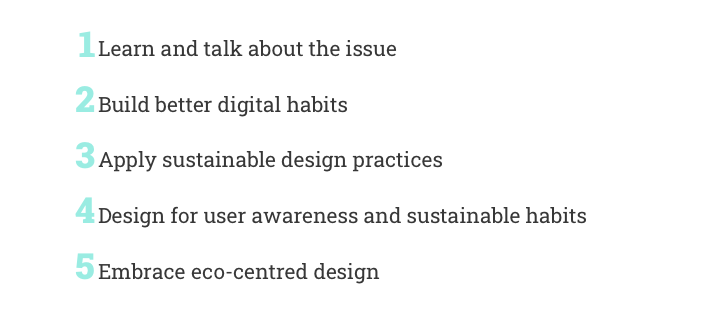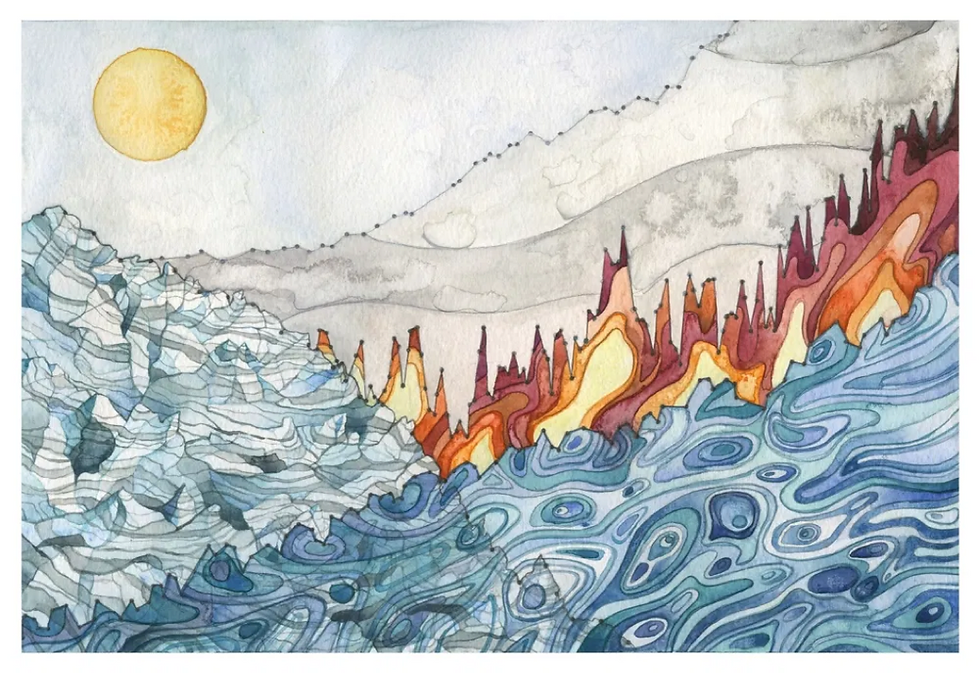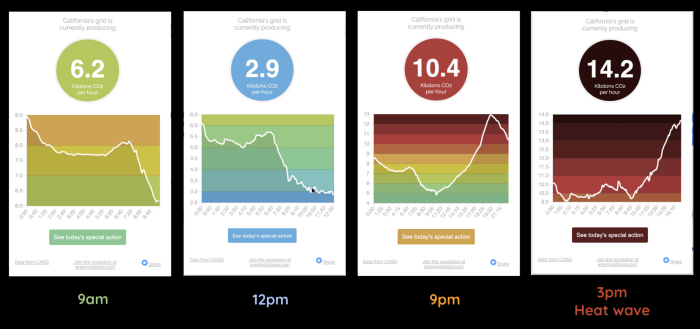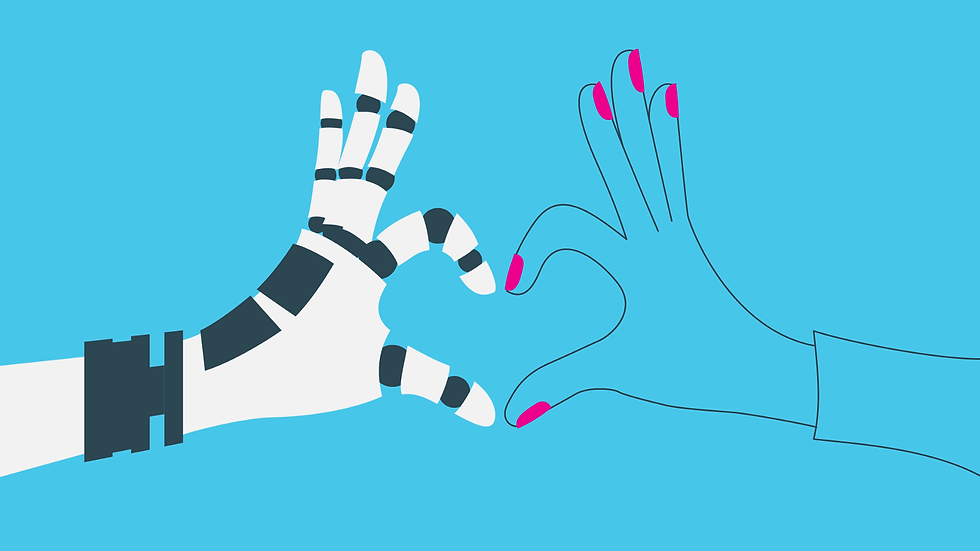Sustainable UX Design | A designer’s role in the climate crisis
- Laila Goubran
- Jul 16, 2021
- 7 min read
Overall there seems to be an increased awareness about the climate crisis.
The effect of growing greenhouse gas emissions on our planet’s temperature, sea levels, weather systems and even health, is understood by more and more people. And organizations, as well as individuals, are looking and promoting ways to reduce this impact and our emissions in general.
But while it’s easier to grasp the impact of our transportation and manufacturing practices on the environment, the impact of technology and the products that as user experience designers we are building every day is not as well understood.
These are just a few of the shocking numbers I have lately learned about the impact of digital technology on the environment and it made me and it made me wonder:
How Can I as a designer working at a large tech company contribute to a more sustainable future?
Ever since I was a kid I had a fascination with weather systems and how the many factors or weather affect each other. So it was natural that I would end up extremely interested in understanding how we as humans are affecting climate. And in the summer of 2020, I got the opportunity to attend the Climate Reality Leadership Global Training, which is lead by Al Gore and aims to prepare leaders around the globe to be able to speak to and act on the climate crisis and it really helped me learn to talk about the climate crisis and the ways to address and provided me with the tools and network to research more about what I can do from my position. You can read more about my learnings from the training in this blog.
Since then I have been doing more research about sustainable design, and I’d like to share the summary of my journey so far. 5 ways that as UX designers we can become part of a more sustainable future:

The climate crisis in ~ 30 seconds
Before diving into what we can do, it’s important to understand that the main reason for the crisis is the rise of greenhouse gas levels and CO2 levels in the atmosphere. While a natural cycle is expected, measurements show that in recent years — specifically in the last 200 years with the industrial revolution — levels have been rising at a much steeper rate than what is naturally expected. The graph below highlights this spike.
The concentration of these gases in turn causes more radiation and heat from the sun to be trapped in the atmosphere causing what is referred to as global warming. And while the most obvious problem with global warming would seem to be extreme weather events, it’s important to remember that our ecosystem and planet systems are very interdependent and complex. 2 degrees of warming are enough to disrupt our food and water supply and have even been linked to the increase of infectious diseases and humans general health. Not to mention of course the well-being of other species.
Understanding the core of the problem makes it clear that our primary goal should be to reduce the carbon footprint and greenhouse gas emissions produced by our products and our activities.
1. Learn and talk about the issue
As with everything the first step is to educate ourselves and to talk about the issue. There are tons of resources out there and increasingly more design-specific blogs and research about what UX designers specifically can do.
Some of my favourites are Greentheweb and unpacking.design. I loved attending the 2019 sustainableux conference and can’t wait for the next one. Find your favourites and get informed. There are so many ideas being shared.
But also start the conversation within your team and spread awareness, you don’t need to be an expert to talk about the issue, just share what you’ve learned and invite others to learn or even start their own initiatives.
2. Build better digital habits
There’s so much we can do to improve our day-to-day use of technology use and even our process at work. While one email or one video stream may not seem like a big deal, the volume of those activities around the world has a huge impact.
While it’s not expected to completely stop using these services, there are some practices we can do to consciously use them. For example, you can:
Unsubscribe from newsletters and mailing lists that don’t add a lot of value to reduce the email traffic and let’s face it declutter your inbox and your mind.
When sharing designs or work, avoid adding big attachments to your emails and try to share links to the media instead. This significantly reduces the size of the emails and in turn the data traffic it creates. You can leverage cloud services, like drive or dropbox for this.
Switch your website to a green host. There are several hosts that either use servers running on green energy or at least that make sure to offset the CO2 emitted by them like GreenGreeks and Hostpapa. You can find what works best for your needs.
In your meetings, consider turning off your video when it’s not necessary or when it will really make a difference in your communication. One of my colleagues suggested turning on the camera for the first few minutes for greetings and then turning it off for the rest of the meeting.
Another simple habit is to switch your search engine to Ecosia, which uses its profits to plant trees. They say it’s about 45 searches for one tree and one of my favourite things about it is that it tracks your number of searches and in turn trees planted.
3. Sustainable design practices
In my search, I came across the Sustainable web manifesto, which on its own is a very good resource for sustainable web practices. But it made me wonder if there are maybe certain design practices or patterns that can make our designs more sustainable. One of the best resources to answer this question was Tim Frick’s book Designing for sustainability.
In general most of the practices that we as designers can do are about reducing the data load necessary to run our services or apps and for users to achieve their goals with them.
So things like improving findability, having a good content strategy and making sure users can find what they’re looking for and complete their tasks with the least clicking around and back forth loading as possible is on top of the list of what we can do.
Basically, anything that optimizes the performance of your product or website can be considered a sustainable design practice. Like lazy loading, especially for images and videos, and only loading what’s really necessary. Optimizing the quality of those images and videos so that they’re not unnecessarily big is very important. And obviously using those images and videos only when they significantly add value to the experience.
Additionally, mobile-first design is considered a sustainable strategy to keep content and website simple and help designers prioritize information and features, leading to faster load times.
What I learned is basically that “good design is better for the environment” which is great news. It’s not like we have to do anything that would disrupt the user experience for that, sustainability is just another reason why we need good design.

4. Designing for user awareness
We know that the products we build impact people’s behaviours so we have the responsibility to make sure to design products that can promote sustainable user awareness or at least improve their awareness about their impact.
Asking yourself things like “What is the most unsustainable behaviour your product might encourage?” is one way of doing that and evaluating your designs.
But there are many examples for promoting good behaviour, like in most food ordering apps now, letting the user choose whether they want plastic cutlery or not and you’ll notice they’re off by default or letting them search for sustainable packaging Or in uber eats you can search for restaurants that have sustainable packing.

We can also start to highlight the more sustainable or eco-friendly options when users are making choices, for example for transportation methods or durability. And adding an explanation for why it’s like that would be even better. This can potentially motivate the user to make the change even if the sustainable option has minor disadvantages like a slightly higher price.
Something as simple as switching the order of the options to bring the more sustainable one forward can nudge users in the right direction and above all speak to the values and priorities of the organization.
An effective technique for influencing user behaviour is of course gamification and applying game design practices in your designs.
Energy lollipop is a nice example of how emission tracking can be visualized and gamified in a way that can motivate users to join challenges to reduce them.
5. Eco-centred design
Addressing the climate crisis with design requires a system’s thinking approach. An understanding of the full impact and lifecycle and consideration of the impact of over space and time and to think of every design we create as part of our planet’s ecosystem.
“All definitions of sustainable development require that we see the world as a system — a system that connects space; and a system that connects time. When you think of the world as a system over space, you grow to understand that air pollution from North America affects air quality in Asia, and that pesticides sprayed in Argentina could harm fish stocks off the coast of Australia. And when you think of the world as a system over time, you start to realize that the decisions our grandparents made about how to farm the land continue to affect agricultural practice today; and the economic policies we endorse today will have an impact on urban poverty when our children are adults.” — Designing for sustainability | Tim Frick
There are some designers, like Monika Sznel, who are promoting eco-centred design and publishing tools to help designers adopt a more sustainable approach for their process.
Becoming eco-centred doesn’t mean we’re going to deprioritize or ignore our users' needs but basically that in creating products and developing solutions we should start to consider the impact of the product or service beyond addressing user needs and user problems.
We can start to consider non-human actants and stakeholders for the problems we are solving and consider nature as an equal perspective in our prioritization.
We can start to consider the complete lifecycle of what we are creating. From the materials and energy needed to produce them to how users will dispose of them when they no longer need them.

Even a step further than consider the full lifecycle of our products We are invited to reframe our thinking to circular design methods to create products and services that no longer have a lifecycle with a beginning and an end.
These are just some examples for getting starting with considering sustainability in our design process and day-to-day. As designers, we have the responsibility to contribute to a more sustainable future and make sure we create services and user experiences that fit in it.














Comments